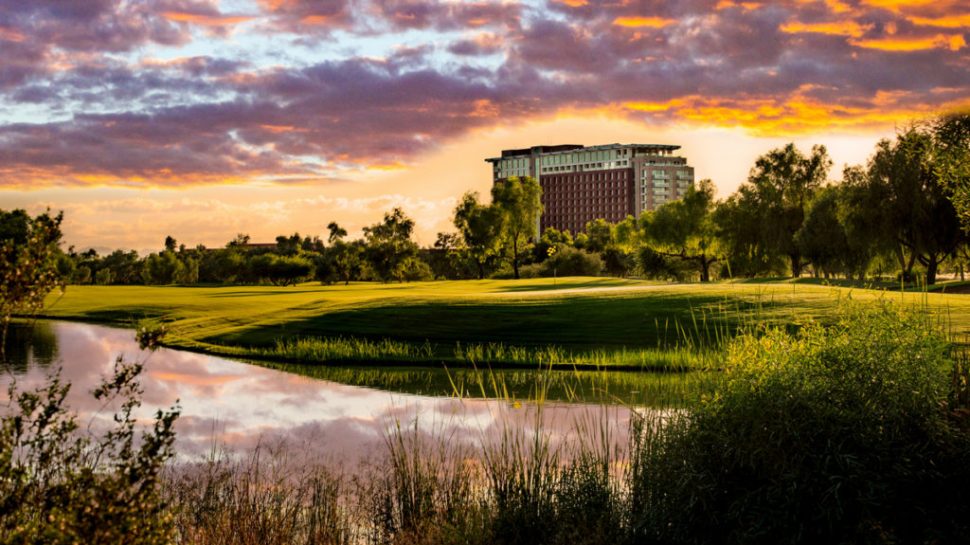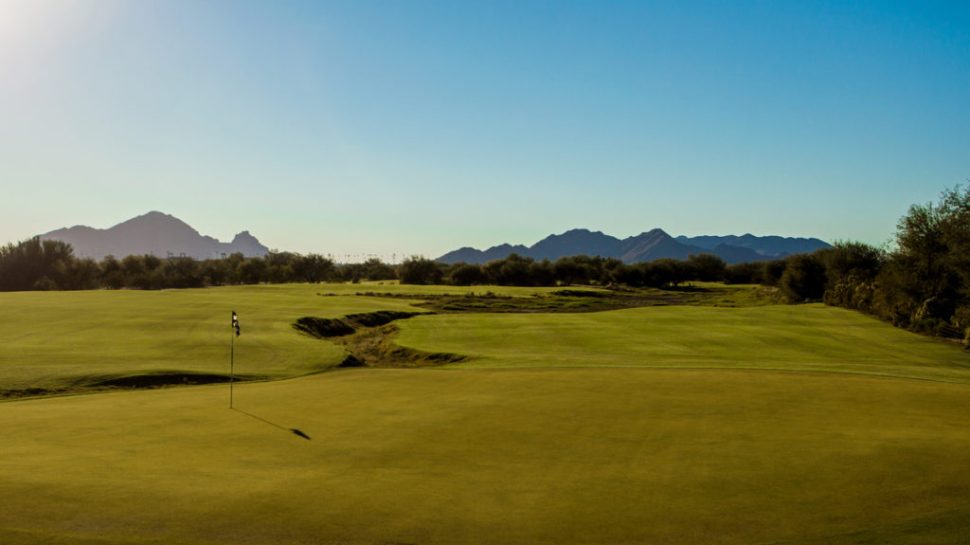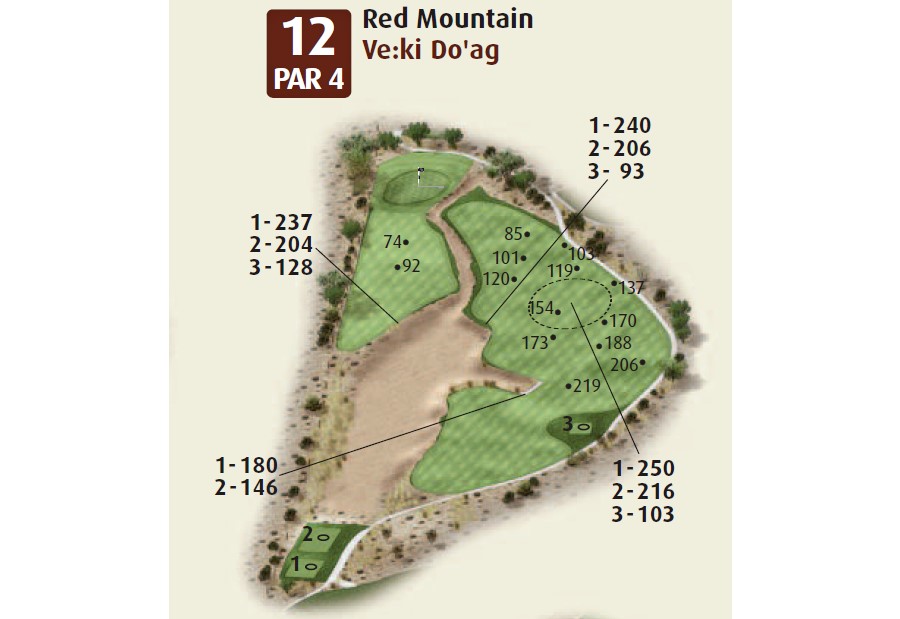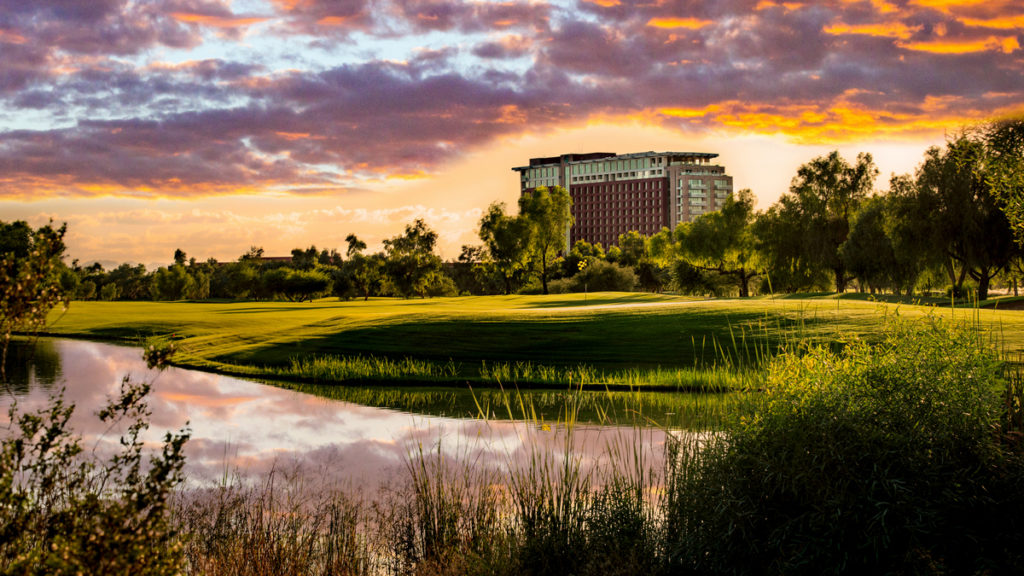O’Odham Course
12th Hole / Par-4 / 392 Yards
Scottsdale, Arizona

Ben Crenshaw and Bill Coore are among the most sought after course designers in the sport. Among their strengths is a passion for ensuring Mother Nature receives top billing and avoiding a heavy handed impact in creating memorable holes and courses. The mantra of “less ir more” is very much a primal consideration when they are involved with any project.
Talking Stick boasts two courses — O’Odham and Piipaash. The courses were formerly named North and South respectively. Both are located on gentle land with little in terms of elevation change. For many other architects such a situation would likely necessitate significant earth moving with the predictable outcome of overly manufactured courses standing apart from the land rather than blending in naturally.
The 12th is called “Red Mountain” because of its stately presence in the immediate background. The mountain is the sacred site of the Salt River Pima-Maricopa Indian Community and is off limits to any public exploration.

When you arrive at the 12th tee — the choices presented are as clear as Arizona sunshine. A desert wash splits the fairway into two distinct landing areas. The right side offers far more width and features no forced carries. The left fairway option is fraught with more risk. There’s also a nerve wracking carry of 237 yards and is much narrower in the landing zone.
Those opting for the right side face the more challenging approach shot. The putting surface is set on 3,644 square feet and set on a slight diagonal with the same desert wash encountered at the teeing area once again an issue. This time the serpentine wash continues to separate one side of the fairway from the other and eventually forms the border with the right side of the green. Those on the the right side of the fairway have to float an approach that carries to a pinpoint landing in order to remain on the green.
For those deciding to take on the left fairway area — the situation becomes a bit more dicey. Not only must the wash be avoided but there’s out-of-bounds which runs up the entire left side. The slightest pulled tee shot can quickly find disaster. Even those who successfully reach the fairway must also contend with the OB as it pushes tight to the left side of the green. The best part about the left side is that the angle into just about any pin location is far easier than those doing so from the right side, however, nothing is ever preordained.

When the pin position is cut towards the front left location it takes just the slightest of miscalculations to find the OB area. The most enduring aspect of the hole is that players relying strictly upon power must tame that impulse and secure the best angle into the green. Placement is central to success with the 12th.
Holes occupying dead flat terrain can be the hardest challenge for architects to overcome. Crenshaw and Coore have brilliantly taken what was presented and maximized its clear natural connection. In this day and age where power golf is far too often called upon — the 12th mandates prudent positioning as the more needed skillset.
Great holes provide choices for the fullest range of players to decide upon. The 12th is the quintessential chess match. Every move has an outcome and every move a clear consequence.
Choose wisely — your score and sanity — will be dependent upon doing so.
Photos courtesy: Talking Stick Golf Club
